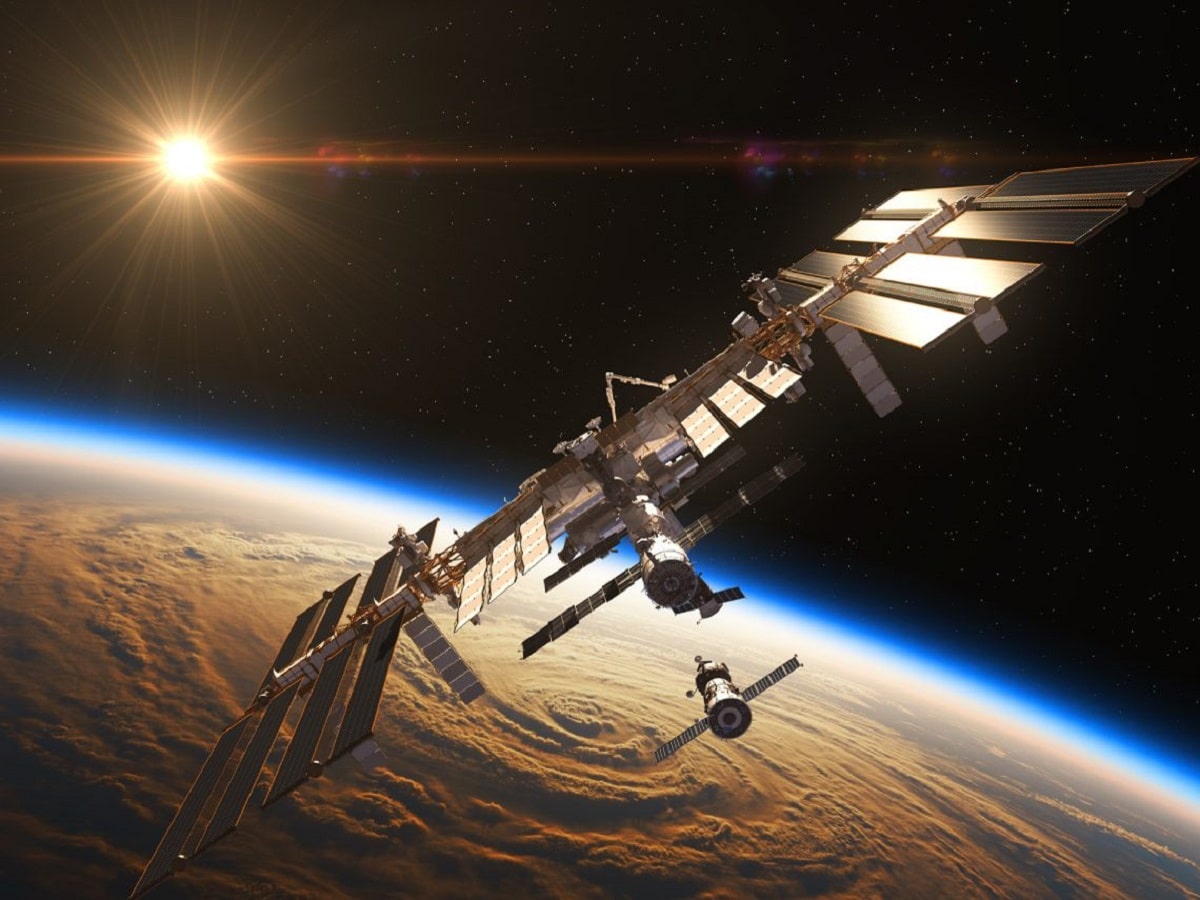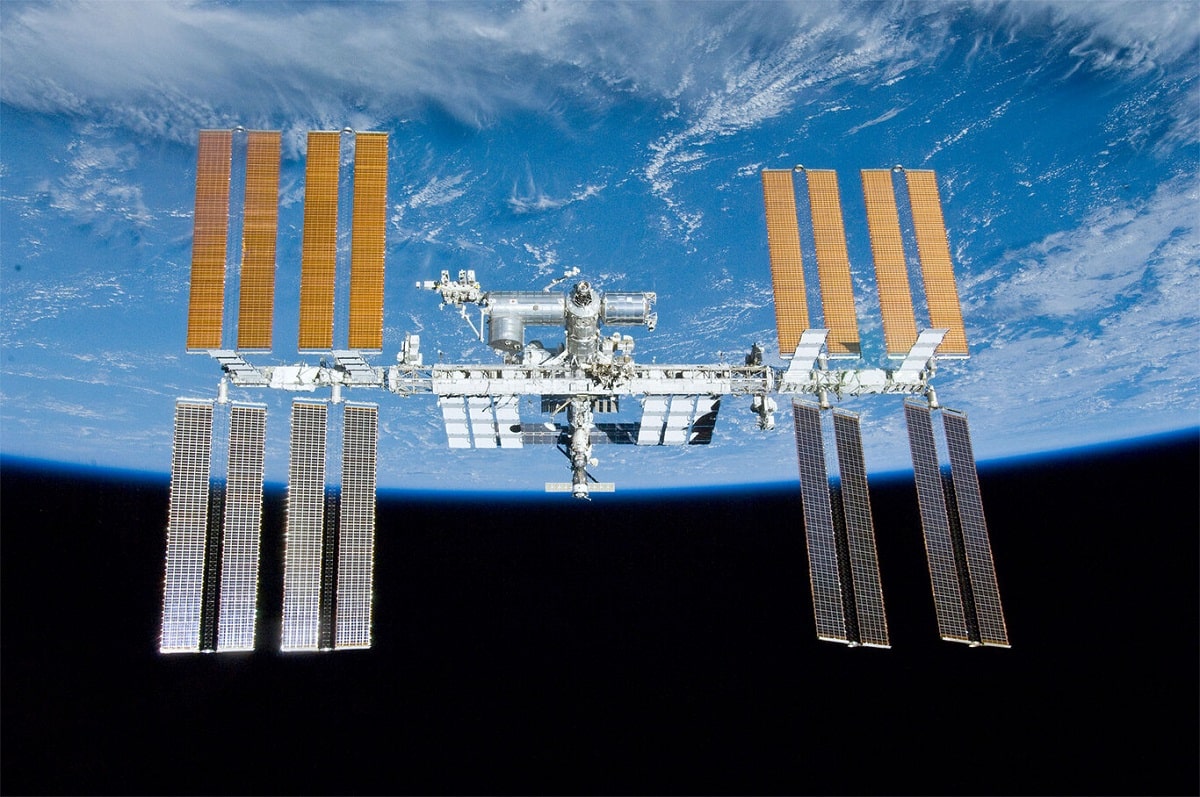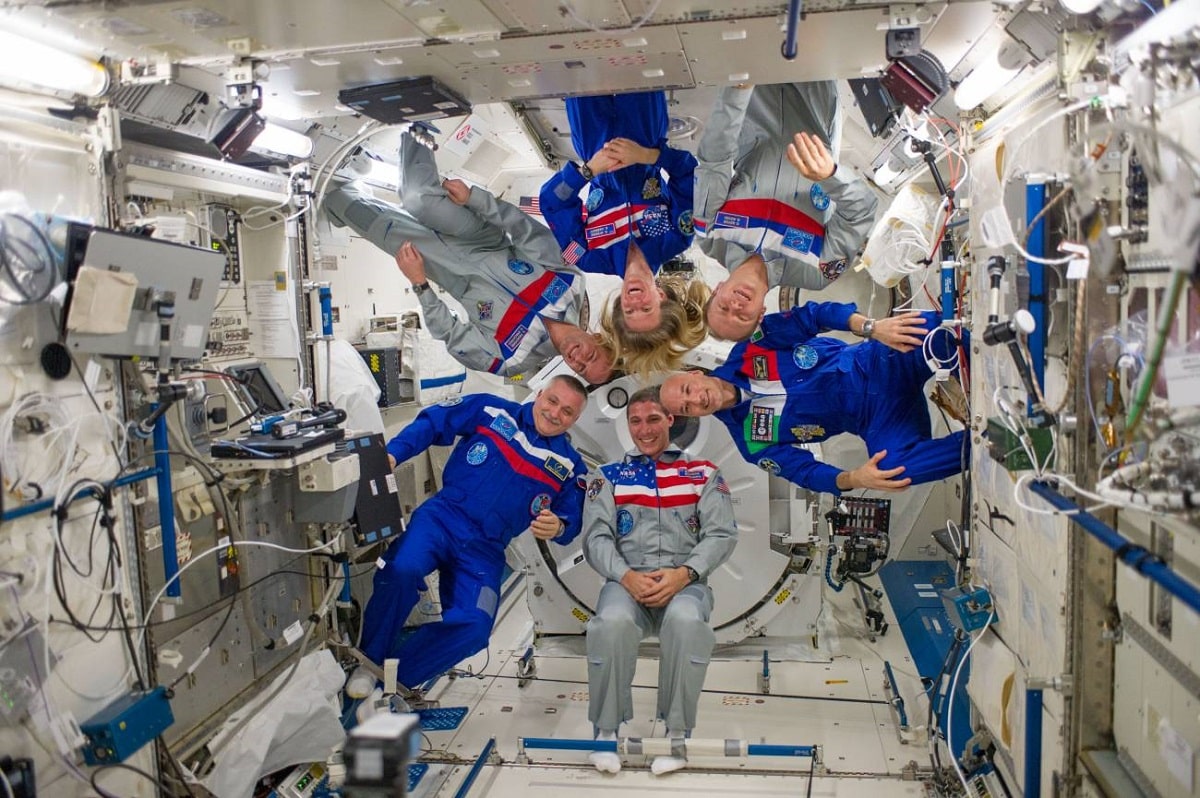
The International Space Station is a joint project of five space agencies: NASA, the Russian Federal Space Agency, the Japan Space Exploration Agency, the Canadian Space Agency, and the European Space Agency. many people wonder how to see the international space station from the earth's surface.
For this reason, we are going to dedicate this article to telling you what the main characteristics are and how to see the International Space Station from the Earth's surface.
Characteristics of the international space station

In general, it can be said that the International Space Station is a huge machine, located in an orbit around the Earth, 386 kilometers away from Earth, about 108 meters long, 88 meters wide and weighing about 415 tons when it was built in 2010. With a habitable volume of about 1.300 cubic meters, its complexity would exceed anything conceived to date. It can permanently house seven astronauts who will succeed each other and connect as the mission demands. Its power is provided by the largest solar panels ever built at 110 kilowatts.
Summary of the characteristics to 2010:
- Width: 108m
- Long: 88m
- Mass: 464 t
- Crew number: 6 in principle
- Labs: 4 at the moment
- living space: 1300 m³
- Speed: 26.000 km/h
Space station components are not easy to manufacture. It is powered by solar panels and cooled by a circuit that dissipates heat from the modules, the spaces where the crew lives and works. During the day, heat temperature it reaches 200ºC, while at night it drops to -200ºC. For this, the temperature must be properly controlled.
Trusses are used to support solar panels and heat sinks, and modules shaped like jars or spheres are connected by "nodes." Some of the main modules are Zarya, Unity, Zvezda and Solar Array.
Several space agencies have designed robotic arms to maneuver and move small payloads, as well as inspect, install, and replace solar panels. The most famous is the space station telemanipulator developed by a Canadian team, that stands out for its 17 meter long. It has 7 motorized joints and can bear loads heavier than usual like a human arm (shoulder, elbow, wrist and fingers).
How to see the International Space Station

Have you ever wondered how to see the International Space Station? Yes, it is in the sky, orbiting our Earth. But specifically, where is the space station now in our orbit? NASA and ESA answer this question in real time. Thanks to its real-time space station tracking map.
Thanks to this live update map, you will be able to see the orbital path that the space station follows and the pattern that it follows, in relation to its current trajectory. Also, You will see reference information such as latitude, longitude, altitude and speed.
NASA, for its part, answered some interesting questions that you may have asked yourself on occasion about the International Space Station. For example, is it visible in the sky where you are now? Do you need a telescope to see the International Space Station in the sky? Also, it tells you that it can be seen more clearly near where you live.
NASA has a website dedicated to the International Space Station ISS. Your job is to give us interesting information about this ergonomic giant. Specifically, if we look at the sky, how do we know where it is, what orbit it follows, and other curiosities. The page is called Spot The Station, and you can always consult it in English.
First, you have a map called the Live Space Station Tracking Map. Thanks to this map, you will be able to see the position of the International Space Station in its orbit around the Earth. In real time and in an hour and a half with previous and future positions. In this way you will be able to know the approximate location of the space station in reference to our planet.
This information is provided to us by the European Space Agency ESA. You can check it out at this link ESA itself and on a dedicated page on NASA's website. Also, you can answer questions about the purpose of the International Space Station, orbital speed, and more there.
If that's not enough for you, NASA links to its Image of the Day page. Although it is not directly related to the International Space Station, on this site you can find high-quality photographs of all corners of our planet. It is updated daily, explaining in detail what the photo shows and even telling us which satellite the image was taken with. Also, in some images you can compare the current state of a place on Earth with previous images.
Where can I see the space station?

In addition to knowing where the International Space Station is right now, you'll definitely want to see it looking up. In principle, according to NASA itself, The International Space Station is the third brightest object in the sky and is easy to see. No binoculars or telescope required, you can see it with your own eyes.
But of course the International Space Station is not everywhere. To find out where to see it, NASA provided us with a map showing the best places to see the International Space Station. You can search your location to refine your target, or move around the map by zooming in or out until you find your location. In the dropdown lists, you can specify the country, state/region, and city. Therefore, the map will adapt to delimit the selected area.
Once you have selected a location, you will see a list of dates so you know the best time to view the ISS from there. It also tells you how many minutes it will be visible, where it will appear and where it will disappear. Great for planning your space station display, knowing exactly where you need to be so you don't miss any details.
Finally, if you register on NASA's own page, You will receive email notifications with new dates and instructions to see the ISS in the sky. If you like to observe space, remember a free service.
I hope that with this information you can know more about how to see the international space station.